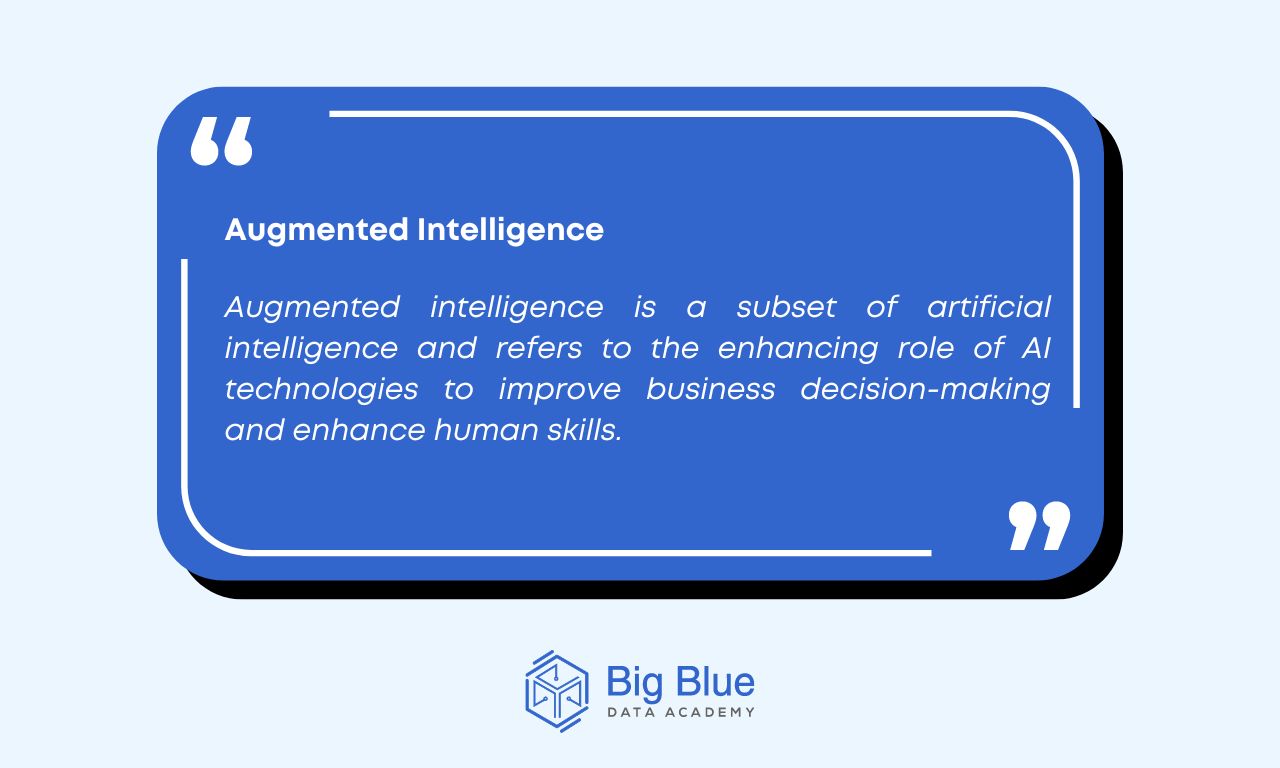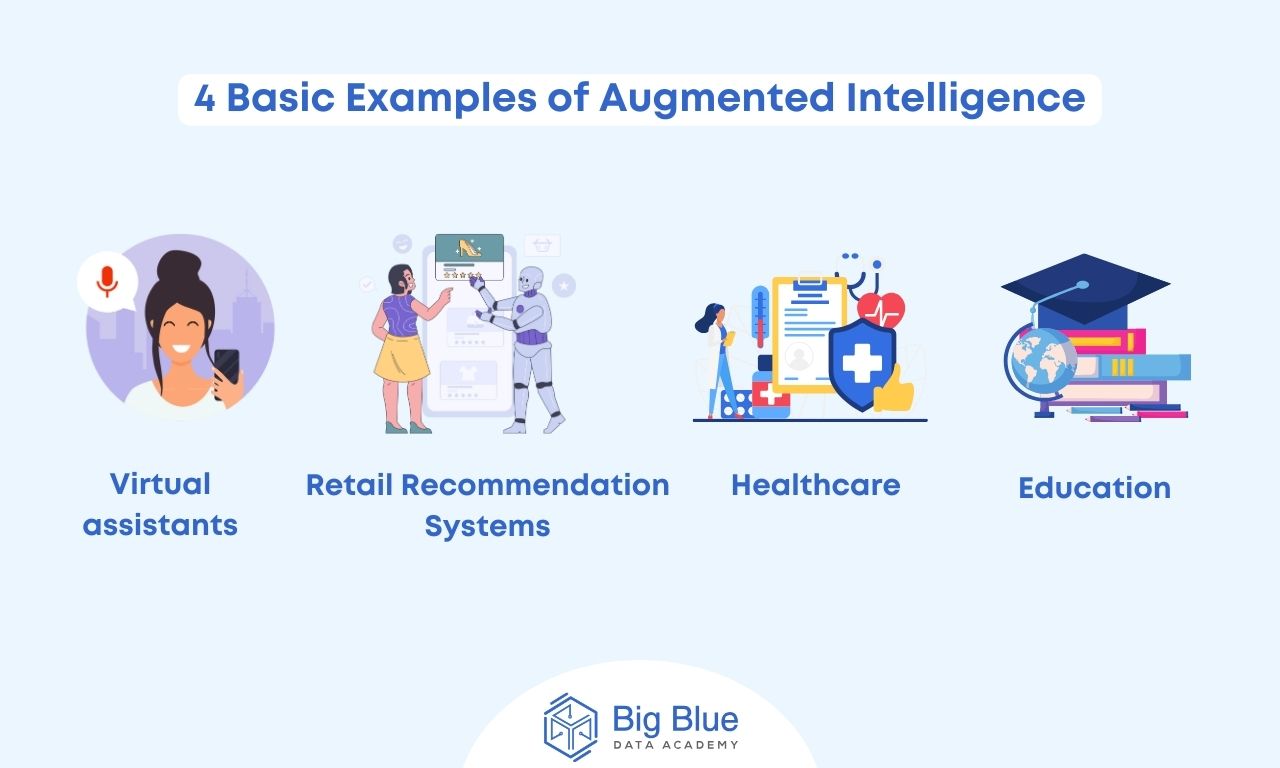Augmented Intelligence: Definition and Examples (2024)
Artificial intelligence is a key term for innovation and the power of technology in our daily lives.
But what happens in the case of augmented intelligence, a less-known concept that has a reinforcing role in the business decision-making process and a general empowerment of human potential?
So in today's article, we will focus on the concept of augmented intelligence and more specifically we will see:
- What is augmented intelligence?
- Why is it important?
- How it differs from artificial intelligence
- Some basic examples
Before we dive in, let's start with a basic definition.
What Is Augmented Intelligence and Why Does It Matter?
Augmented intelligence is a subset of artificial intelligence and refers to the enhancing role of AI technologies to improve business decision-making and enhance human skills.
Augmented intelligence uses machine learning for data analysis combined with the help of the human factor and does not aim to replace human intelligence with machines.

It focuses on finding ways in which humans and machines can work together, rather than removing the human element from certain tasks.
Augmented intelligence leverages various AI technologies such as machine learning, natural language processing (NLP), and computer vision to identify patterns and find effective, qualitative, and immediate solutions.
In addition, AI systems can personalize their interactions and recommendations based on individual preferences and adapt to changing conditions, continuously improving their performance.
So now that we've seen some basics about augmented intelligence and its benefits, let's see how it differs from artificial intelligence.
How Does Augmented Intelligence Differ From Artificial Intelligence?
Augmented intelligence and artificial intelligence, although similar concepts, actually present many differences.
Artificial and augmented intelligence's main and most important difference lies in their autonomy.
AI is a technology that mimics human intelligence and is intended to operate largely independently, without direct human intervention.
Artificial intelligence systems can make decisions, learn from data, and adapt autonomously to new conditions.
On the other hand, augmented intelligence is designed to work alongside humans, having a supporting role, and allowing human intelligence to dominate. It is not intended to replace human intelligence but to enhance it.
Next, let's look at some basic examples of augmented intelligence for better understanding.
4 Basic Examples of Augmented Intelligence
Some key examples where augmented intelligence is applied very effectively are the following:

Example #1: Virtual Assistants
Siri, Apple's digital voice assistant, falls under the category of augmented intelligence.
Siri does not operate independently or replace human intelligence as it does not take actions on its own as a system.
Instead, it aims to enhance human decision-making, providing answers and help when needed.
Example #2: Online Retail Recommendation Systems
Augmented intelligence also plays a key role in improving online retail recommendation systems.
More specifically, augmented intelligence leverages algorithms to analyze user behavior, preferences, and historical interactions.
By understanding preferences, these systems provide personalized product recommendations based on specific consumer behaviors, preferences, and browsing history.
Example #3: Healthcare
Augmented intelligence systems help healthcare professionals diagnose diseases, interpret medical images, and recommend personalized treatment plans.
This is achieved through the analysis of patient data and medical records to provide information and make critical clinical decisions.
Example #4: Education
Augmented intelligence technologies are used very effectively in the education industry to personalize learning experiences by providing and adapting feedback.
These systems analyze student data about their performance and learning preferences to adapt learning materials and optimize their performance.
In a Nutshell
So we explored augmented intelligence and its importance as well as how it differs from artificial intelligence.
We also mentioned some examples for better understanding.
So if you're involved in this subject and want to enrich your knowledge, read more related articles on our blog!


.jpg)